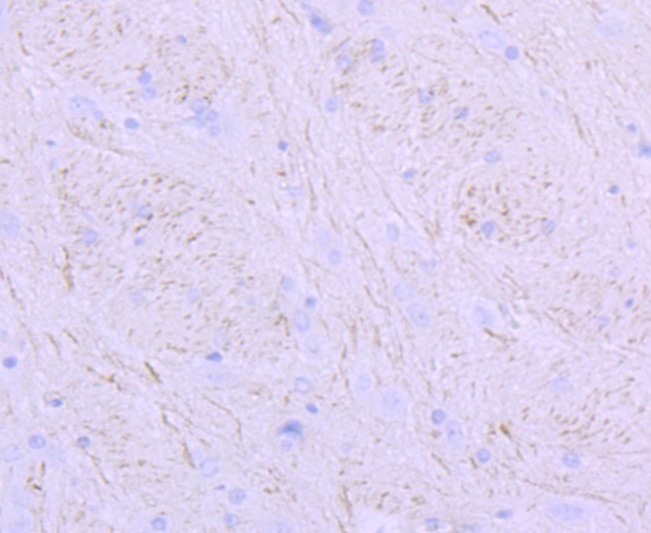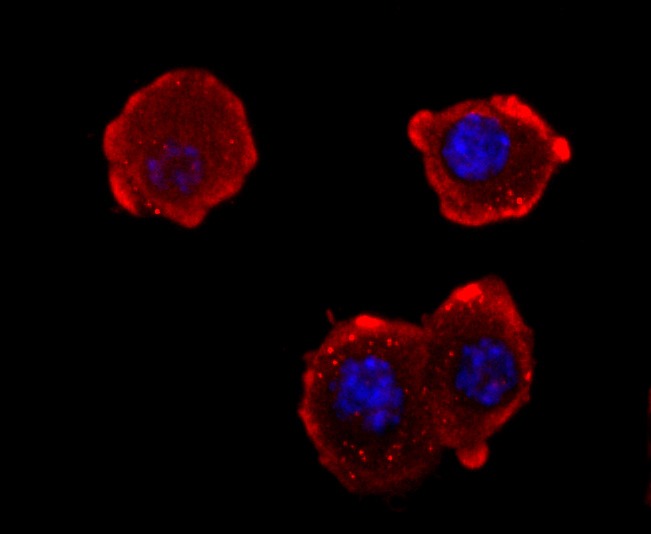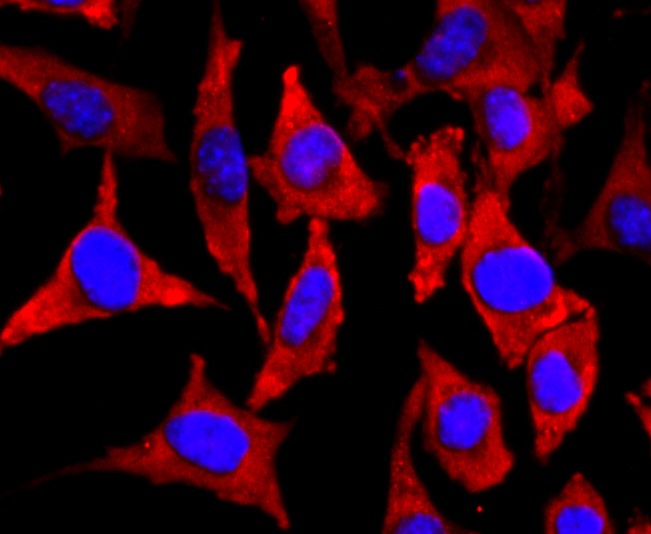Shopping Cart
Remove All Your shopping cart is currently empty
Your shopping cart is currently empty
Anti-NEFM Antibody (7Y5) is a Rabbit antibody targeting NEFM. Anti-NEFM Antibody (7Y5) can be used in ICC/IF,IHC,IP,WB.
| Pack Size | Price | USA Warehouse | Global Warehouse | Quantity |
|---|---|---|---|---|
| 50 μL | $296 | 7-10 days | 7-10 days | |
| 100 μL | $498 | 7-10 days | 7-10 days |
| Description | Anti-NEFM Antibody (7Y5) is a Rabbit antibody targeting NEFM. Anti-NEFM Antibody (7Y5) can be used in ICC/IF,IHC,IP,WB. |
| Synonyms | NF-M, NFM, Neurofilament triplet M protein, Neurofilament medium polypeptide, Neurofilament 3, NEFM, NEF3, 160 kDa neurofilament protein |
| Ig Type | IgG |
| Clone | 7Y5 |
| Reactivity | Human,Mouse,Rat |
| Verified Activity | 1. Western blot analysis of NEFM on 293T cells lysates using anti-NEFM antibody at 1/500 dilution. 2. Immunohistochemical analysis of paraffin-embedded mouse brain tissue using anti-NEFM antibody. Counter stained with hematoxylin. 3. Immunohistochemical analysis of paraffin-embedded rat brain tissue using anti-NEFM antibody. Counter stained with hematoxylin. 4. ICC staining NEFM in N2A cells (red). The nuclear counter stain is DAPI (blue). Cells were fixed in paraformaldehyde, permeabilised with 0.25% Triton X100/PBS. 5. ICC staining NEFM in PC-12 cells (red). The nuclear counter stain is DAPI (blue). Cells were fixed in paraformaldehyde, permeabilised with 0.25% Triton X100/PBS. 6. ICC staining NEFM in SH-SY5Y cells (red). The nuclear counter stain is DAPI (blue). Cells were fixed in paraformaldehyde, permeabilised with 0.25% Triton X100/PBS.       |
| Application | |
| Recommended Dose | WB: 1:1000-2000; IHC: 1:50-200; ICC/IF: 1:100-500 |
| Antibody Type | Monoclonal |
| Host Species | Rabbit |
| Construction | Recombinant Antibody |
| Purification | ProA affinity purified |
| Appearance | Liquid |
| Formulation | 1*TBS (pH7.4), 1%BSA, 40%Glycerol. Preservative: 0.05% Sodium Azide. |
| Research Background | Neurofilament-M (NF-M), for neurofilament medium polypeptide, a member of the intermediate filament family, is a major component of neuronal cytoskeletons. Neurofilaments are dynamic structures; they contain phosphorylation sites for a large number of protein kinases, including protein kinase A, protein kinase C, cyclin-dependent kinase 5, extracellular signal regulated kinase, glycogen synthase kinase-3, and stress-activated protein kinase gamma. In addition to their role in the control of axon caliber, neurofilaments may affect other cytoskeletal elements, such as microtubules and actin filaments. Changes in neurofilament phosphorylation or metabolism are frequently observed in neurodegenerative diseases, including amyotrophic lateral sclerosis (ALS), Parkinson's disease, and Alzheimer's disease. |
| Conjucates | Unconjugated |
| Immunogen | Recombinant Protein |
| Uniprot ID |
| Molecular Weight | Theoretical: 160 kDa. |
| Stability & Storage | Store at -20°C or -80°C for 12 months. Avoid repeated freeze-thaw cycles. |
| Transport | Shipping with blue ice. |
| Size | Quantity | Unit Price | Amount | Operation |
|---|

Copyright © 2015-2025 TargetMol Chemicals Inc. All Rights Reserved.